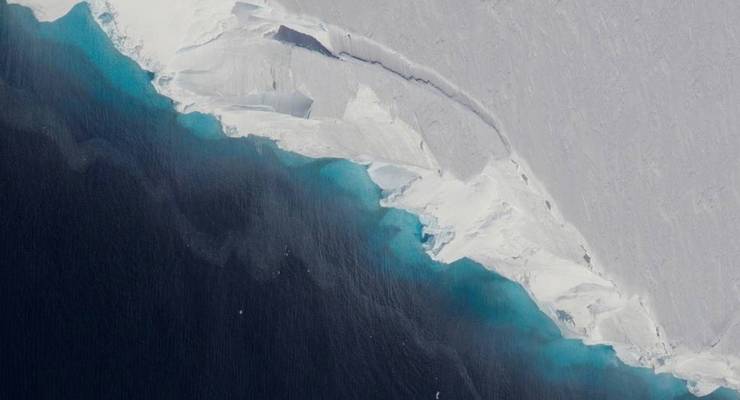
Scientists at NASA’s Jet Propulsion Laboratory in Pasadena have made a disturbing discovery: a gigantic cavity growing at the bottom of Thwaites Glacier in West Antarctica.
The hole, the researchers said, is two-thirds the area of Manhattan and almost 1,000 feet tall – big enough to have contained 14 billion tons of ice. Sadly, most of that ice has melted over the last three years.
The findings are part of a new NASA-led study of the disintegrating glacier and now highlight the need for detailed observations of the undersides of Antarctic glaciers, as scientists continue to search for better ways of finding out how fast global sea levels could rise in response to climate change.
The JPL researchers were expecting to find some gaps between ice and bedrock at Thwaites’ bottom where ocean water could flow in and melt the glacier from below. They were, however, surprised by the size and the explosive growth rate of the newfound hole.
“We have suspected for years that Thwaites was not tightly attached to the bedrock beneath it,” JPL’s Eric Rignot, co-author of the study, said. The study was published Wednesday in Science Advances. “Thanks to a new generation of satellites, we can finally see the detail.”
The huge cavity was revealed by ice-penetrating radar in NASA’s Operation IceBridge, an airborne campaign that began in 2010 and studies connections between the polar regions and the global climate.
The researchers also used data from a constellation of Italian and German spaceborne synthetic aperture radars. These very high-resolution data can be processed by a technique called radar interferometry to reveal how the ground surface below has moved between images.
“The size of a cavity under a glacier plays an important role in melting,” the study’s lead author, JPL’s Pietro Milillo, said. “As more heat and water get under the glacier, it melts faster.”
About the size of Florida, Thwaites Glacier is currently responsible for approximately four percent of global sea level rise, the scientists said. The glacier holds enough ice to raise the world ocean a little over 2 feet and backstops neighboring glaciers that would raise sea levels an additional eight feet if all the ice were lost.
The JPL team said the huge cavity is under the main trunk of the glacier on its western side – the side farther from the West Antarctic Peninsula. In this region, as the tide rises and falls, the grounding line – the place near the edge of the continent where it lifts off its bed and starts to float on seawater – retreats and advances across a zone of about two to three miles.
The glacier has been coming unstuck from a ridge in the bedrock at a steady rate of about 0.4 to 0.5 miles a year since 1992. Despite this stable rate of grounding-line retreat, the melt rate on this side of the glacier is extremely high.
“On the eastern side of the glacier, the grounding-line retreat proceeds through small channels, maybe a kilometer wide, like fingers reaching beneath the glacier to melt it from below,” Milillo said.
In that eastern region, the rate of grounding-line retreat doubled from about 0.4 miles a year from 1992 to 2011 to 0.8 miles a year from 2011 to 2017. Even with this accelerating retreat, however, the ice melts slower on this side than on the western side.
In the Southern Hemisphere summer of 2019 through 2020, the U.S. National Science Foundation and British National Environmental Research Council are mounting a five-year field project to answer the most critical questions about Thwaites and its processes and features.
With this International Thwaites Glacier Collaboration, the glacier, currently one of the hardest places to reach on Earth, is about to become better known than ever before.
Milillo hopes the new results will be useful for the project’s researchers as they prepare for their fieldwork.
“Such data is essential for field parties to focus on areas where the action is, because the grounding line is retreating rapidly with complex spatial patterns,” he said.
“Understanding the details of how the ocean melts away this glacier is essential to project its impact on sea level rise in the coming decades,” Rignot added.
The paper by Milillo and his co-authors in Science Advances is titled “Heterogeneous retreat and ice melt of Thwaites Glacier, West Antarctica.” Co-authors include other researchers from the University of California, Irvine; the German Aerospace Center in Munich, Germany; and the University Grenoble Alpes in Grenoble, France.
















